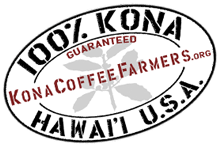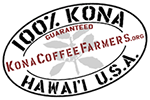Hearing Date and Time and Place
October 10, 2013- Thursday at 9 am
West Hawaii Civic Center, Com. Meeting Hale Bldg. G, 74-5044 Ane Keohokalole Highway
We need your Testimony.
HDOA Requirements for Testimony: … submit comments orally or in writing. Written testimony may be submitted prior to the hearing via postal mail to the Quality Assurance Division c/o Department of Agriculture, 1428 S. King St., Honolulu, HI 96814, or via fax at (808) 832-0683, or via email at HDOA.QAD@hawaii.gov. Please include the word “testimony” and the subject matter.
_________________________________________________________________________
To: KCFA Members
Re: PROPOSED AMENDMENTS TO COFFEE STANDARDS RULES
Earlier this month the Hawaii Department of Agriculture (HDOA) issued a notice of public hearing on extensive proposed amendments to the administrative rules relating to coffee standards. In addition to hearings at 4 other locations, there will be a hearing on Thursday, October 10, 2013, at 9:00 am in Building G of the West Hawaii Civic Center in Kailua-Kona.
Copies of the HDOA’s “Notice of Public Hearing” and of the “Proposed Amendments” are posted on the KCFA website.
These proposed amendments may have very significant impacts on many Kona coffee farmers. Please take the time to review the proposed amendments. It is important that every coffee farmers with concerns or questions about the proposed changes attend the hearing and participate.
Below for your review is a series of questions and observations. If you have additional questions or observations, please get those to info@konacoffeefarmers.org with the subject <HDOA Proposed Changes>
Again, please plan to attend and participate in the hearing.
9 QUESTIONS AND OBSERVATIONS
1—Adverse Affect on “Home Roaster” Sales
The proposed revision to Section 1-143-3 eliminates the definition of “Wholesale Quantity” of green coffee from the rules.
It appears that this will eliminate the HDOA’s practice of many years of exempting sales of less than 10 pounds of green coffee from certification requirements.
This exemption for sales of less than “Wholesale Quantities” of green allowed many Kona coffee farms to build a thriving business of selling small packages of Kona green coffee to “home roasters” on the Mainland. The popularity of home roasting green has been growing rapidly. There are reports that for some Kona farms their sales of green coffee of 10 pounds or less amounts to more than half of their coffee sales.
If the less than “Wholesale Quantity” exemption is eliminated, direct sales to home roasters may become impractical. The new and burdensome regulations intended for large commercial sales would, for example, appear to require farmers to affix to even a one pound package of green a 2” x 4” tamper-proof tag, light in color, made of a material that resists tearing, with a blank area at least two inches by two inches.
Why is the HDOA acting to eliminate the less than Wholesale Quantity exemption? Why is the HDOA creating burdens for small-scale coffee businesses? Have there been problems with such sales? If so, what have the problems been—and how does this change address such problems?
2—Fees (Section 4-143-2 (k) and (l)
What is the basis for an increase in the charge for facsimile copies of an HDOA certificate from $1/page to $48/page? What was the basis for increasing the inspection fee from $31/hour to $48/hour?
For many years small-scale coffee farmers have suggested to the HDOA that a per pound inspection fee would provide fairness and equity for farmers—as compared with the much lower per pound fees paid by large corporate processing operations. If a “per pound” fee is properly set to cover HDOA costs, there would be no adverse economic impact on the HDOA. Such a “per pound” fee system would fairly distribute the costs of inspection services.
3—Deceptive Coffee Grade Descriptions
The “quality” of coffee is a subjective judgment as to the desirability of the taste of brewed coffee in the cup. Such a measure of quality does not necessarily have a relationship to the size or the appearance of green beans.
The current and the proposed “grade” classifications used by the HDOA give the false impression that the grade classifications are measures of quality (that is, Kona “Extra Fancy” tastes better than “Fancy” or “No. 1” or “Prime”). The grades, however, primarily indicate bean size, not the quality of the brewed coffee in the cup.
For years professional cuppers—and HDOA inspectors–who taste coffee for a living have observed that there is no detectable quality difference between coffee from the same farm brewed from “Extra Fancy” and “Prime”. They have also observed that the defect element of the Hawaii coffee grade system—at least for Prime and above—has no discernable effect on taste quality. If the Hawaii coffee grades primarily indicate size of beans, then the names of the grades should describe size (for example, “Large Size Beans”, “Medium Size Beans”, “Small Size Beans”)—and not imply quality differences in brewed coffee.
Even though “Kona Prime” continues to offer the same taste for brewed coffee that made Kona coffee world famous, continued use of the current grade names falsely implies that the quality of Kona coffee has declined because CBB damage reduces the amount of Kona meeting the “higher” grades like “Extra Fancy” and “Fancy”. This is a point clearly illustrated by the Greenwell Farms Inc.’s. CBB White Paper of July 2013 (posted at www.konacoffeefarmers.org). GFI’s green bean market has been adversely affected by the perception of buyers that GFI’s inability in 2012/2013 to deliver “Extra Fancy” or “Fancy” grades indicates a decline in “quality” of Kona coffee—when, in fact, the traditional quality taste of brewed Kona coffee is readily available from Kona “Prime” which GFI had available in abundance.
The HDOA should take steps to eliminate the false impressions generated by the names of its grade classifications.
4—Pinholes Caused By CBB
In section 4-143-6(i) the proposed amendments add new defect score for beans affected by pinholes caused by CBB. Does the HDOA have data indicating that such pinholes adversely affect the taste of brewed coffee in the cup? If so, what does that data indicate?
5—Non-Sale Transport of Coffee Within the Region
The application of Section 4-143-12 appears to place a significant record keeping burden on Kona farmers for transport of cherry, parchment, and green in instances where no sale is involved. For example, many Kona farmers make many trips each year transporting cherry, parchment, and green to and from mills where the coffee is processed and then returned to the farm with no sale of the coffee involved. What is the purpose of requiring the making and storage of detailed records of this transport for 6 years? Shouldn’t the transport of coffee within the region when no sale occurs be exempted from this requirement?
6—HDOA Affidavit of Origin Form
The proposed changes to Section 1-143-1(a) add new language describing a “geographic region statement” to be provided by the HDOA that may be used to document the origin of coffee. Is this form the same as the form emailed to KCFA by the HDOA in September 2012, entitled “Affidavit of Hawaii–Grown Coffee Origin—Form C-6 (8/12)”? If so, will the HDOA sanction the use of this form by Hawaii coffee farmers to represent “origin” to foreign buyers?
7—Entry of Public or Private Premises or Vehicles
Section 4-143-8 purports to provide authority for HDOA inspectors to enter any public or private premises and any vehicle of transport—with no reference to a warrant or probable cause. Has this provision been approved by the Hawaii Attorney General’s office as meeting constitutional standards?
8—Certification of Origin Only
Over the years the HDOA has offered a cost-effective option used by many small-scale coffee farmers for “certification of origin only”—with no express grade determination or cupping and a statement of Kona origin with the indication that the coffee meets grade standards of Prime or better. Does the proposed elimination of current Sections 4-143-2(f) and (g) indicate that the HDOA will no longer make this service available to small-scale Kona coffee farmers? If so, what are the reasons for not continuing this service?
9—Increase in Defects Limits for Prime
In addition to changes of defect limits for other grades, Section 4-143-6(e) increases the defect limit for the “Prime” grade from 15% to 20%. Does the HDOA have data indicating that this increase does not affect the quality of the taste of brewed coffee in the cup? If so, what is the data? Has the HDOA made any determination whether the quality of the taste of brewed “Extra Fancy” Kona coffee would be diminished by a similar 20% defects limit?
END______________________________________________________________END

